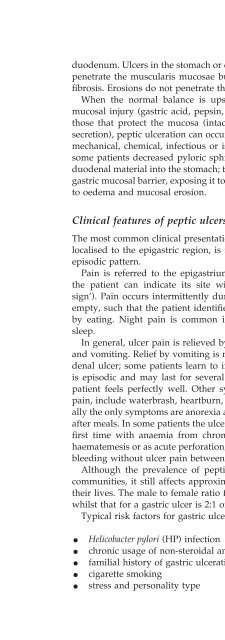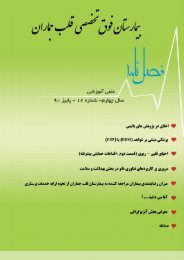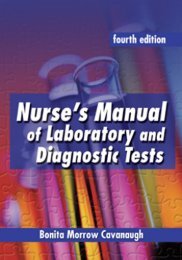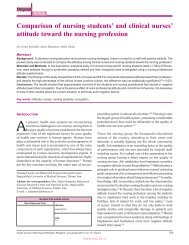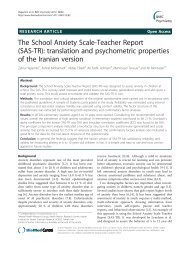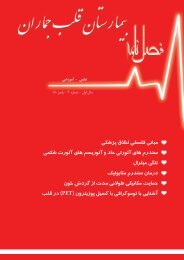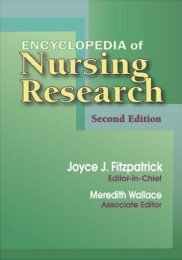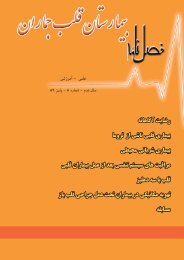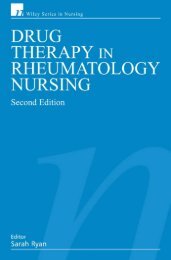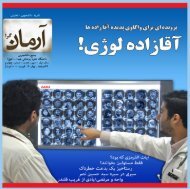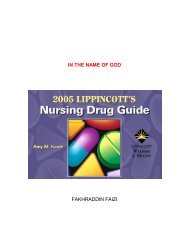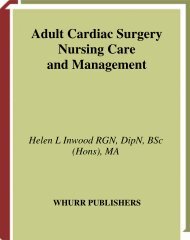Gastrointestinal Nursing.pdf
Gastrointestinal Nursing.pdf
Gastrointestinal Nursing.pdf
You also want an ePaper? Increase the reach of your titles
YUMPU automatically turns print PDFs into web optimized ePapers that Google loves.
The Stomach 45duodenum. Ulcers in the stomach or duodenum may be acute or chronic; bothpenetrate the muscularis mucosae but the acute ulcer shows no evidence offibrosis. Erosions do not penetrate the muscularis mucosae.When the normal balance is upset between the factors which promotemucosal injury (gastric acid, pepsin, bile acids and ingested substances) andthose that protect the mucosa (intact epithelium, mucus lining, bicarbonatesecretion), peptic ulceration can occur. The development of ulceration may bemechanical, chemical, infectious or ischaemic in nature. It is thought that insome patients decreased pyloric sphincter pressure may permit the reflux ofduodenal material into the stomach; the presence of such material disrupts thegastric mucosal barrier, exposing it to acid. Subsequent histamine release leadsto oedema and mucosal erosion.Clinical features of peptic ulcersThe most common clinical presentation is recurrent abdominal pain, which islocalised to the epigastric region, is related to the intake of food and has anepisodic pattern.Pain is referred to the epigastrium and is often so sharply localised thatthe patient can indicate its site with two or three fingers (the ‘pointingsign’). Pain occurs intermittently during the day, often when the stomach isempty, such that the patient identifies it as ‘hunger pain’ and achieves reliefby eating. Night pain is common in duodenal ulceration and can disruptsleep.In general, ulcer pain is relieved by food, milk or antacids and by belchingand vomiting. Relief by vomiting is more typical of gastric ulcer than of duodenalulcer; some patients learn to induce vomiting to gain pain relief. Painis episodic and may last for several weeks at a time. Between episodes thepatient feels perfectly well. Other symptoms, especially during episodes ofpain, include waterbrash, heartburn, loss of appetite and vomiting. Occasionallythe only symptoms are anorexia and nausea, or a sense of undue repletionafter meals. In some patients the ulcer is completely ‘silent’, presenting for thefirst time with anaemia from chronic undetected blood loss, as an abrupthaematemesis or as acute perforation; in other patients there is recurrent acutebleeding without ulcer pain between the attacks.Although the prevalence of peptic ulcer is decreasing in many Westerncommunities, it still affects approximately 10% of all adults at some time intheir lives. The male to female ratio for duodenal ulcer varies from 5:1 to 2:1,whilst that for a gastric ulcer is 2:1 or less.Typical risk factors for gastric ulcer disease include the following:• Helicobacter pylori (HP) infection• chronic usage of non-steroidal anti-inflammatory drugs (NSAIDs)• familial history of gastric ulceration• cigarette smoking• stress and personality type


